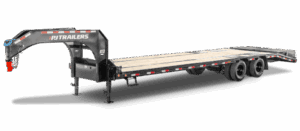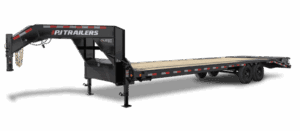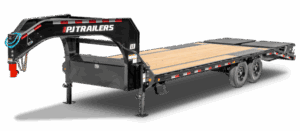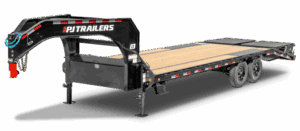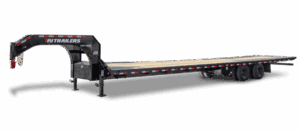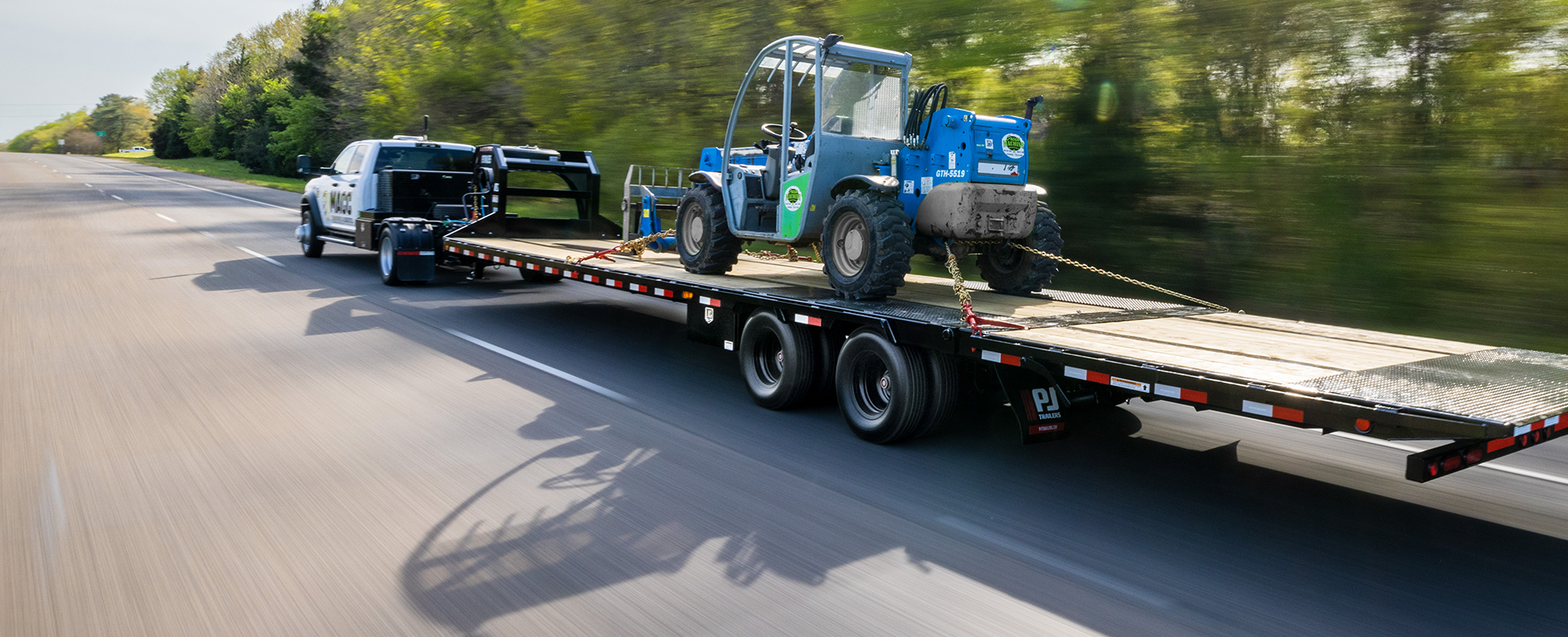
Gooseneck Deckovers
Shop our comprehensive catalog of stable, versatile, heavy-duty pintle hitch and gooseneck trailers for sale.
Gooseneck Trailer Models
Need a reliable solution for heavy hauling? We specialize in robust, heavy-duty cargo trailers. Our inventory includes stable and versatile pintle hitch and gooseneck trailers for sale, built tough to master virtually any demanding application.
Low-Pro Flatdeck With Duals (LD)
| Lengths: | 20 – 44' |
|---|---|
| Width: | 102" |
| GVWR: | 25,000 lbs |
| Load Capacity: | 16,770—19,370 lbs |
Quest Flatdeck With Singles (LQ)
| Lengths: | 25 – 32' |
|---|---|
| Width: | 102 |
| GVWR: | 15,900 lbs |
| Load Capacity: | 11,200—11,700 lbs |
Low-Pro Flatdeck With 7K Singles (LS)
| Lengths: | 20 – 40' |
|---|---|
| Width: | 102" |
| GVWR: | 15,680 lbs |
| Load Capacity: | 8,920—11,120 lbs |
Low-Pro Flatdeck With 8K Singles (LX)
| Lengths: | 20 – 40' |
|---|---|
| Width: | 102" |
| GVWR: | 17,500 lbs |
| Load Capacity: | 10,540—12,740 lbs |
Voyager Hydraulic Dovetail Gooseneck (LY)
| Lengths: | 32 – 40' |
|---|---|
| Width: | 102" |
| GVWR: | 25,000 lbs |
| Load Capacity: | 14,007—21,460 lbs |
Gooseneck Trailer Frequently Answered Questions
Gooseneck trailers are commonly built on a deckover platform, meaning the main deck sits above the wheels. This design allows for a maximum legal width, typically 102 inches, which is often crucial for hauling wide equipment and palletized cargo.
Gooseneck trailers are often considered superior for heavy-duty hauling because the hitch connects over the tow vehicle’s rear axle. This placement transfers a greater portion of the trailer’s weight directly to the truck’s chassis, resulting in improved stability, reduced sway, and the ability to handle significantly higher payloads than bumper-pull models.
Yes, pulling a gooseneck trailer requires a truck equipped with a gooseneck hitch installed in the bed over the rear axle. While these trailers require a compatible heavy-duty pickup (typically a 3/4-ton or 1-ton model), they offer superior maneuverability and are often easier to hitch than traditional fifth-wheel setups.
Gooseneck hitches are generally considered straightforward to hook up. The driver simply needs to align the trailer’s neck over the ball in the truck bed and secure the latch. This style of hitching is often preferred for its reliability and ease of use in diverse worksite conditions.
Gooseneck hitches are known for providing an excellent turning radius. Because the pivot point is forward over the rear axle, the trailer can articulate sharply, allowing for much tighter turns and easier backing maneuvers compared to a bumper-pull trailer of similar length.
